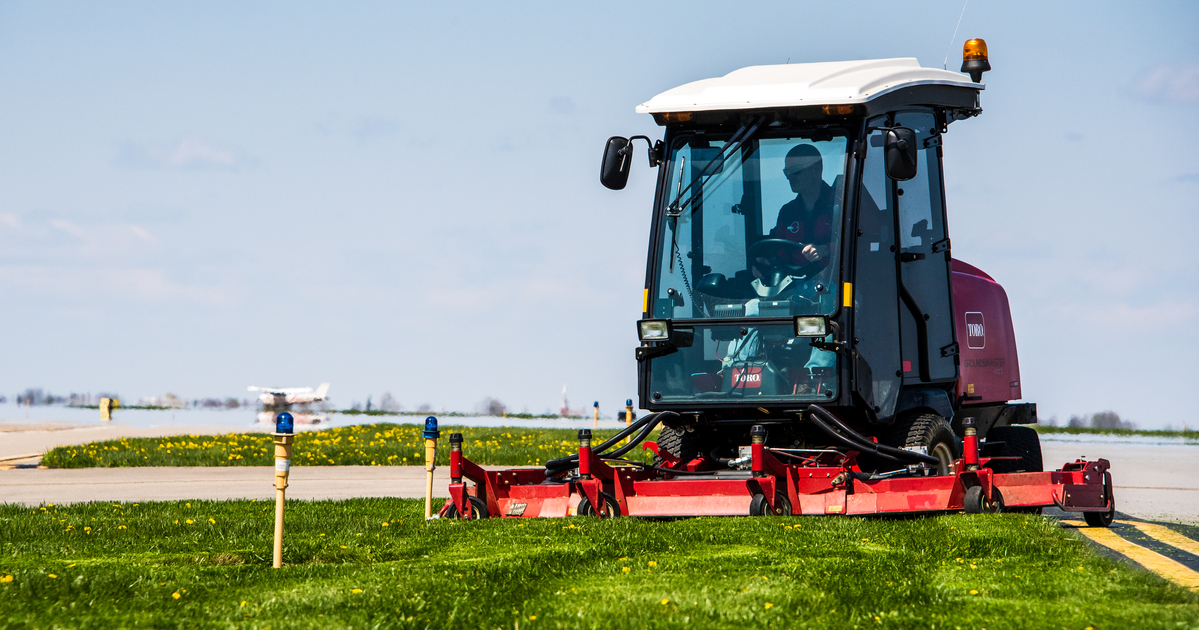Airport Landscapers Seek the Perfect Cut
Maintaining grass on airfields is about safety, not aesthetics
By Jeff Martinelli
Published June 1, 2020
Read Time: 2 mins
When laborers at Pittsburgh International Airport start their riding mowers each day, their goal is not to produce lush, green strips of fairways similar to those found at neatly manicured country clubs.
They are, however, out to get birdies.
“European starlings,” sighs Mike Benway, Field Maintenance Supervisor at PIT. “Our main goal is to deter wildlife through height management. If the grass is too short, it could create foraging spots for European starlings.”
And nobody wants that.
One European starling, an 8-inch bird weighing about 3.6 ounces, may not be a problem, but a flock can be dangerous to airplanes taking off or landing. Short grass attracts starlings, so keeping airfield grass at least five inches high is imperative.
But the grass can’t be higher than eight inches. Taller grass attracts varmints like skunks, groundhogs and maybe even a red-tailed fox now and then. Although those rodents and small animals are a concern, the bigger safety issue is the flying predators which they attract.
“Bigger, high-flying birds, like hawks and turkey vultures, can spot those animals,” said Benway. “They could pose an even bigger threat to planes.”
So what does it take to make sure you are managing grass height properly, keeping it in the sweet spot of five to eight inches high? A good plan, according to Barry Miller, Field Maintenance Superintendent at the airport.
“We work very closely with our Airfield Operations group, not only in communicating where and when our mowers will be, but in identifying the areas need to be cut,” Miller said.
At the beginning of each week, Airfield Operations sends Benway a color-coded map that details where the grass is the highest and in most need of being cut, and where the grass may be able to wait a few days. Red means the area on the map needs immediate attention; yellow coded areas are not too far behind; while grass in green-shaded spots are good for the week.
“We’re in a pretty good routine right now,” said Benway, who is responsible to schedule the crew of four to use two large and two small mowers to maintain the airfield. “If it is raining a couple of days, it can be easy to fall behind.”
In addition to being concerned about what animals the airfield attracts, those on the mowers also have to be aware of airfield lights and signage and make sure they are not obstructed.
It’s an important and big job, but Benway certainly seems happy his crew only has the airfield to maintain.
“We have a whole other crew for that,” he laughs, when asked if his group is responsible for maintaining the flowers and gardens along the roadways at the airport. “They keep the passengers happy by keeping it very nice and beautiful. We keep the airport operational.”
Watch
This Next
Read
This Next






